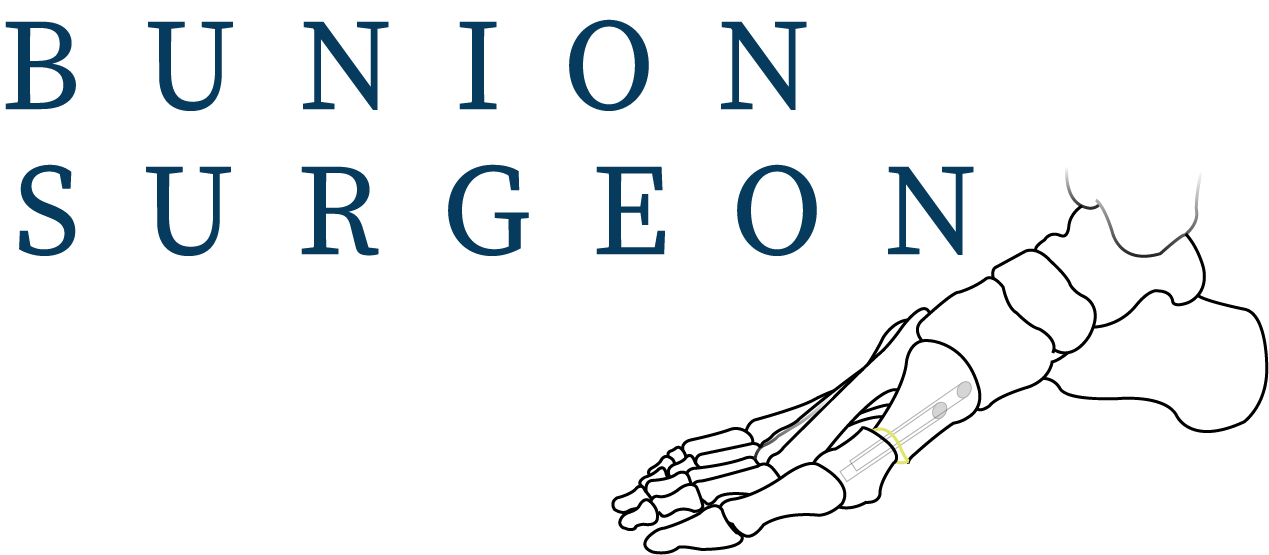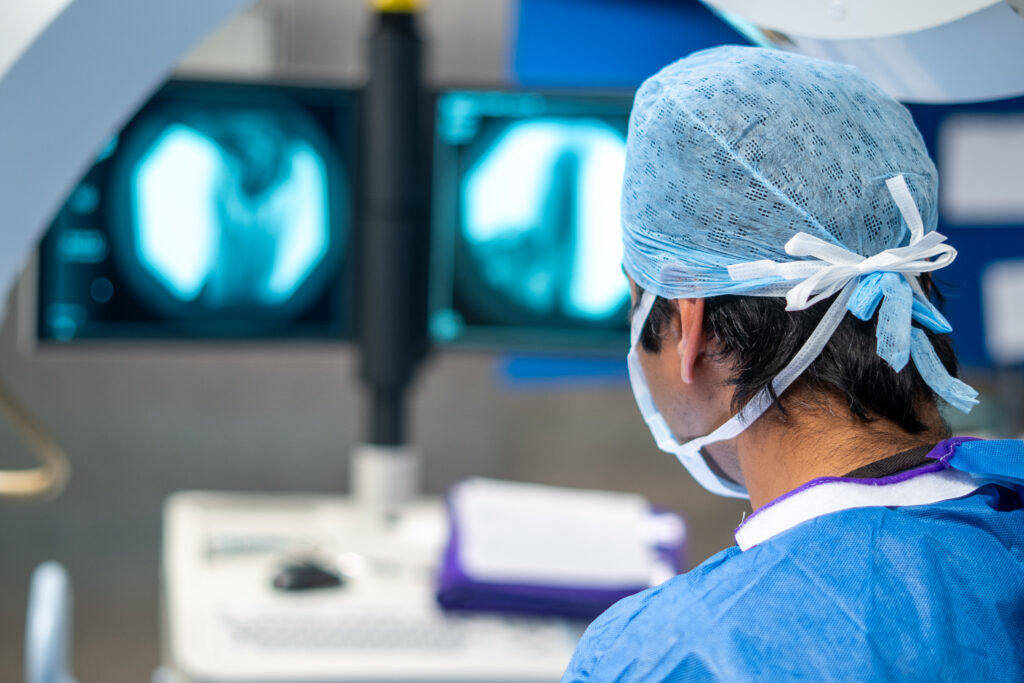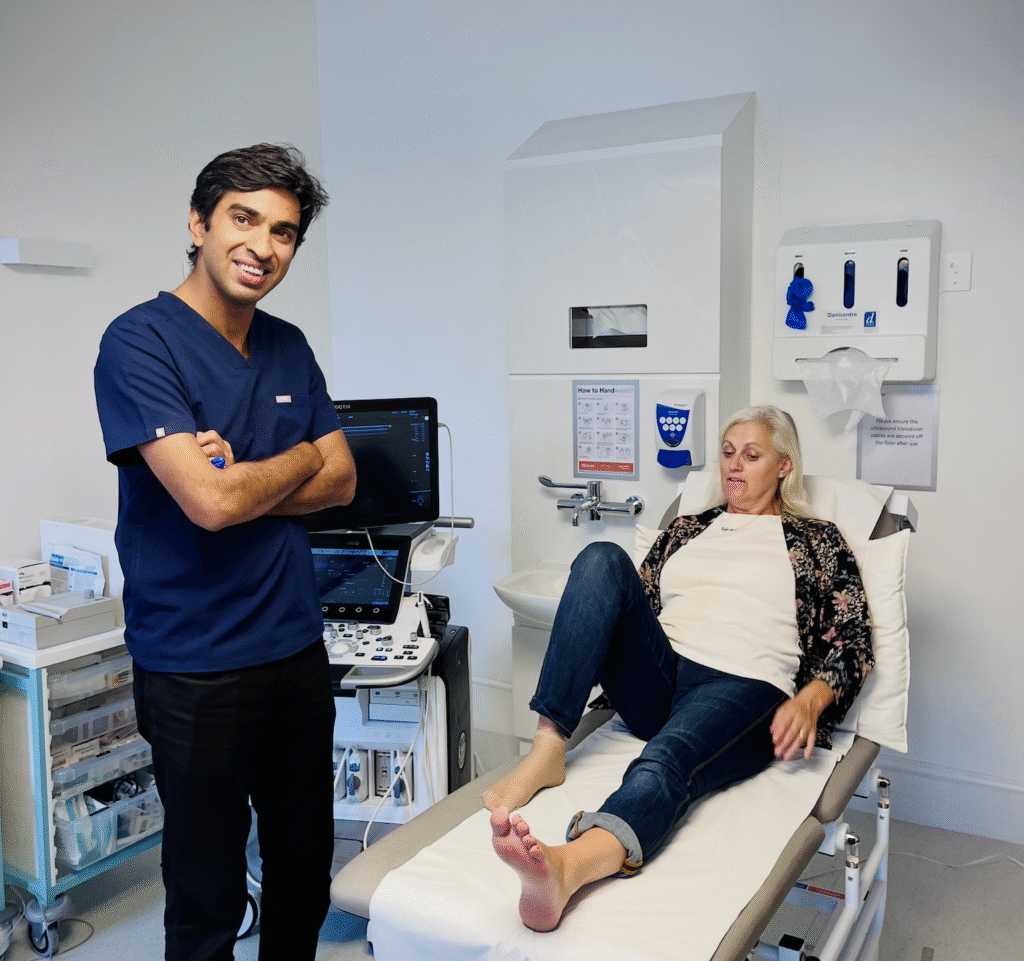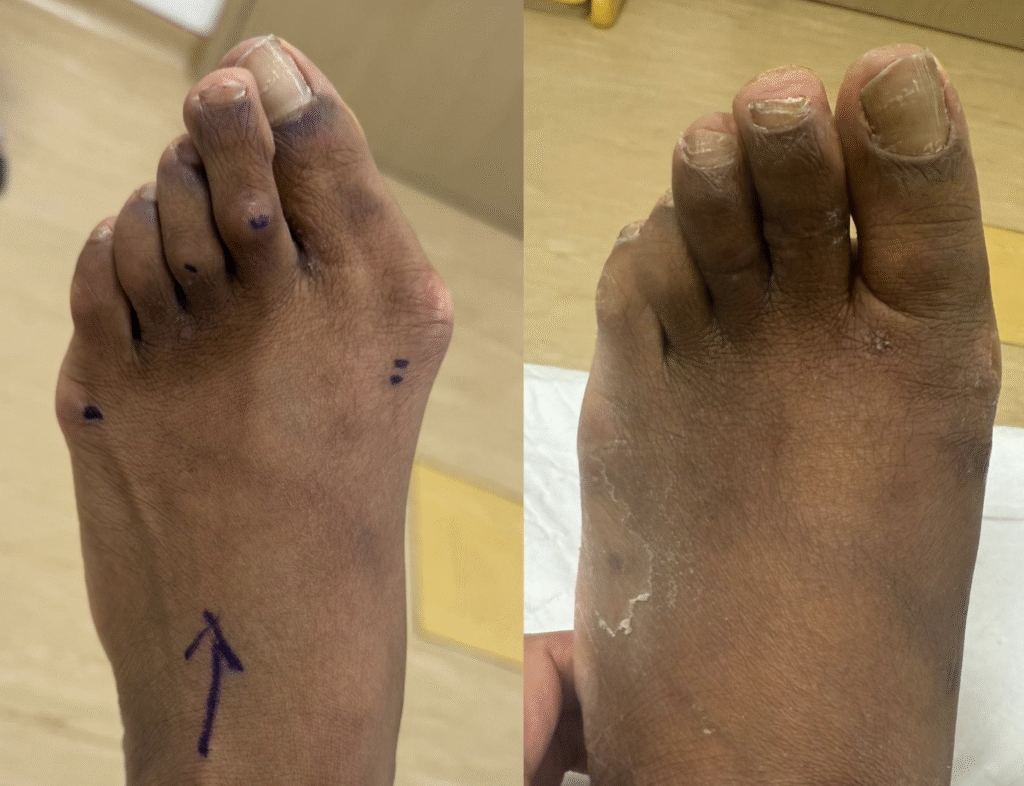It is common for patients with long-standing bunion deformities to also develop a painful hammertoe, most often affecting the second toe, though several toes can become involved.
In this guide, Mr Kaser Nazir, Consultant Podiatric Surgeon and leading specialist in minimally invasive foot surgery in London, explains:
- Why hammertoes frequently develop alongside bunions
- How keyhole surgery can correct both deformities
- What recovery looks like after combined treatment
- Costs and anaesthesia options for bunion and hammertoe surgery
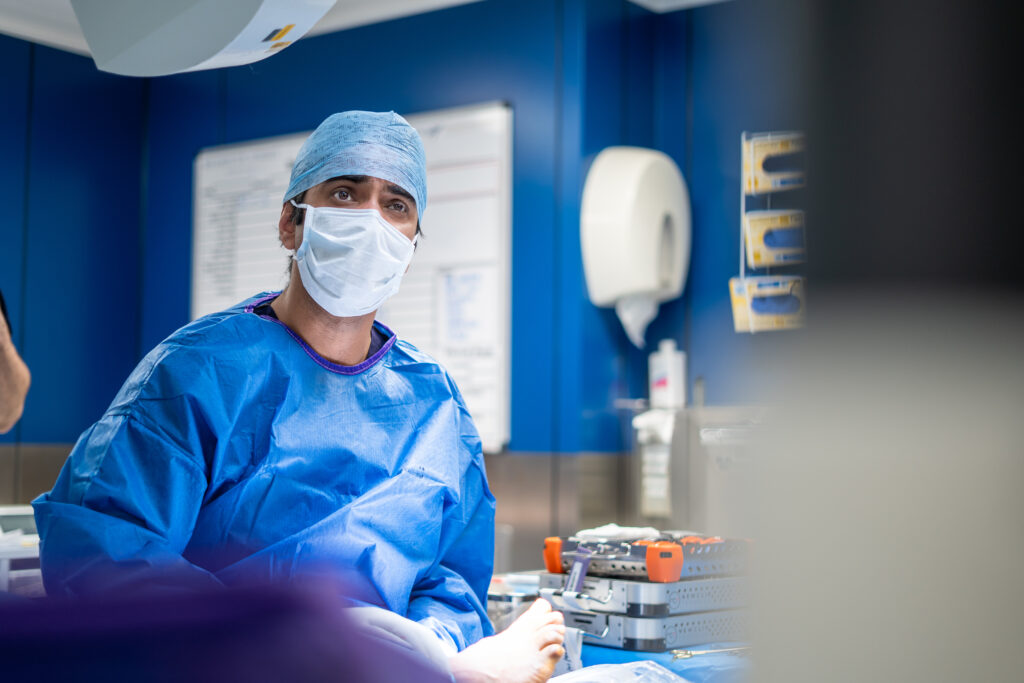
Understanding the Link Between Bunions and Hammertoes
Why Do Hammertoes Develop in Bunion Patients?
There are two main reasons why hammertoes appear in people with bunions.
1. Toe Crowding and Pressure from the Bunion
As a bunion pushes the big toe towards the second toe, space in the shoe becomes restricted. The second toe is gradually forced upwards, leading to:
- Tightening of the extensor tendon on top of the toe
- Contracture of the flexor tendon underneath
- A fixed bend at the middle joint (PIP joint)
This deformity can become painful, often resulting in corns, ulcers, and difficulty wearing normal footwear.
2. Instability and Ligament Damage
When a bunion develops, body weight shifts away from the big toe and onto the lesser toes. Increased pressure on the second, third, and fourth toes can cause:
- Stretching or tearing of the plantar plate ligaments
- Inflammation and weakness
- Progressive hammertoe deformity
Once these structural changes occur, the toes rarely straighten without surgical correction.
Treatment Options for Hammertoe
Minimally Invasive Hammertoe Surgery
Modern keyhole hammertoe surgery allows correction through a tiny incision (around 3 mm) on top of the toe. Using specialised instruments:
- The affected joint is reshaped and straightened
- A small screw or splint stabilises the bone
- One or multiple toes can be corrected during the same procedure
This technique offers:
- Faster healing and minimal scarring
- Reduced post-operative pain
- Quicker return to comfortable footwear
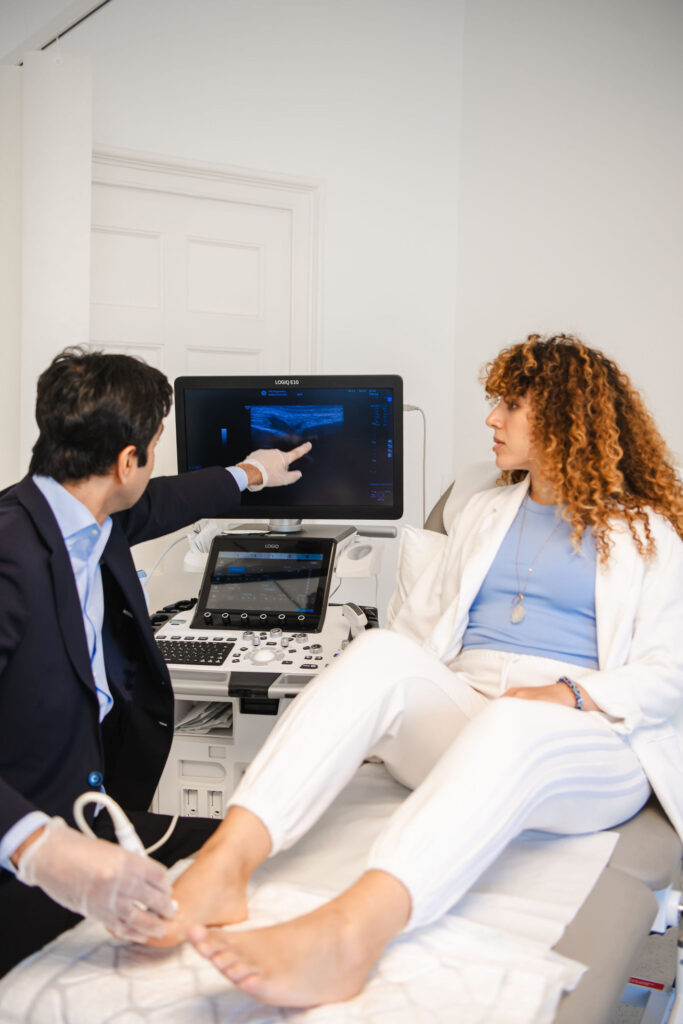
Can Hammertoe and Bunion Surgery Be Performed Together?
Yes — in fact, keyhole bunion surgery and minimally invasive hammertoe correction are often carried out together for a more complete correction.
Typical Recovery Timeline
- Immediately after surgery: Patients can walk in a post-operative shoe.
- Days 1–5: Rest and elevate the foot; walk 10 minutes every hour.
- Weeks 3–4: Transition into sports trainers.
- Weeks 6–8: Bone healing completes.
- Months 3–4: Swelling usually resolves fully.
Recovery time is very similar to bunion surgery alone.
Risks and Recovery Considerations
Combined procedures may involve slightly more discomfort during recovery as multiple bones heal simultaneously. To ensure the best results, patients should follow:
- Specialised toe strapping between weeks 2 and 8
- Targeted toe exercises to restore strength and prevent stiffness
Potential complications such as infection or “floppy toe” are rare when proper after-care instructions are followed.
Cost of Hammertoe Surgery with Bunion Surgery
The total cost depends on the number of toes requiring correction alongside the bunion.
💬 To receive a personalised quote, please email photographs of your feet to our clinic. We will provide a detailed treatment plan and pricing for both pre- and post-operative care.
Anaesthesia Options
Combined bunion and hammertoe surgery can be comfortably performed under:
- Local anaesthetic (most common)
- Sedation (for added comfort)
- General anaesthetic (rarely required)
The choice depends on your preferences and medical suitability.
Why Choose Mr Kaser Nazir for Minimally Invasive Foot Surgery?
- Specialist in keyhole bunion and hammertoe correction
- Consultant Podiatric Surgeon at Guy’s & St Thomas’ NHS Trust and leading private hospitals in London
- Recognised by all major UK private medical insurers
- High-volume practice with excellent outcomes and patient satisfaction
Final Thoughts
If you have both a bunion and a hammertoe, you do not need two separate surgeries. Thanks to minimally invasive keyhole techniques, both deformities can be corrected in one procedure with a straightforward recovery.
📩 Contact our London clinic today to arrange a consultation or send photographs of your feet for a tailored surgical plan.
